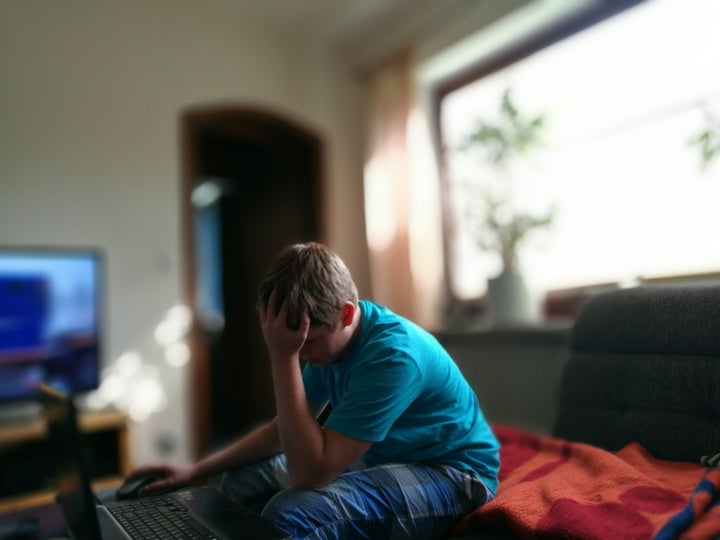No parent likes to think their child could be aggressive or mean toward a peer, or engage in bullying behaviors, and yet it obviously happens. Twenty percent of tweens and teens say they’ve been bullied. Someone’s on the other side of that.
So, what do you do when you realize your child has been the aggressor, either because someone tells you or because you see it yourself? And how can you all move forward in a productive way?
Don’t freak out, but don’t dismiss it.
“It’s important not to panic if this happens. It’s equally important not to automatically dismiss the report as untrue,” said Elizabeth Englander, executive director of the Massachusetts Aggression Reduction Center. “Children who are essentially good and friendly can still experiment with bullying behaviors, because these behaviors can be a way of increasing their social power.”
A kid who is having a hard time socially might “try out” bullying as a way of testing if they can get more attention or admiration from their classmates, Englander explained.
Start from a place of accepting that yes, your child may have done things that aren’t in line with your family’s values. Their behaviors might seem really bad. But you also have the power to take immediate action and to try and stop it from being repeated.
Make sure you’re really clear on what bullying means.
Increased awareness of the pervasiveness and harmfulness of bullying is a good thing, but experts say it’s also caused us to become a little loose with the language. It’s important to distinguish between conflict (disagreement that’s sometimes unpleasant and even aggressive, but both parties have equal footing) and bullying behaviors (which are unwanted, aggressive, intentional and repetitive).
It’s not just a matter of semantics. Using the correct terminology means that when you talk with, say, your kid’s teacher, you’re both clear on how serious a problem this is, and whether it represents a pattern.
And everyone should avoid the label “bully.”

“Language around this topic is important as it influences how students involved in a situation are perceived,” said Bailey Huston, coordinator at PACER’s National Bullying Prevention Center. “Instead of labeling a child as a ‘bully,’ consider using the terms ‘child who bullies’ or ‘child with bullying behavior.’ This first and foremost recognizes they are a child and second they have shown a specific behavior.”
Talk to your kid about the “why.”
Once you’ve learned your child did something unacceptable ― regardless of whether it meets the full criteria for bullying behaviors ― it’s your responsibility as a parent to immediately talk about what’s going on. The conversation should be open and nonjudgemental, Englander said. What you’re looking for is an understanding of why they behaved (or are still behaving) in such a way.
“This allows them to explore how they may be feeling and to talk about factors that may be leading to this behavior, such as peer pressure or being bullied themselves,” Englander said. Then you can work on getting them help.
“Be totally unambiguous with your child about the fact that their behavior is unacceptable.”
It is also a chance for you to state very clearly what bullying behaviors are, and to be explicit that they’re absolutely not appropriate or something your family condones.
Emphasize that what matters is the action, not the intent.
It’s possible your child will seem genuinely surprised to be called out for his or her behavior, saying something like, “Oh, it was just a joke.” Or, “he laughed while I was doing it.”
In that moment, it is your responsibility to make it clear that there is a difference between kidding (where all parties are having fun) and teasing (where one person feels hurt or belittled). Explain that even a child who was laughing in the moment may have been doing so to save face with peers, but deep down was really hurt.
“What we want to teach children is that it is the impact of the behavior [that matters], not the intent,” said Carrie Goldman, author of “Bullied: What Every Parent, Teacher, and Kid Needs To Know About Ending The Cycle Of Fear.”
Your kid may not have meant to be unkind, but that isn’t what matters. It’s your responsibility to make that distinction clear.
Develop an action plan ― and set consequences.
Bullying behavior can absolutely be stopped, but it requires swift, focused action. Think about who else should be involved, Huston said, like school staff ― and work with them to come up with a specific, step-by-step plan for action. They’re experts, so don’t freak out if you don’t know exactly what to do. It’s your job to ask about what they’re doing, what you can do to help, and make sure you’re all working toward a specific goal.
Talking to your kid’s pediatrician is a good idea as well, Englander said. See if your child should be referred for an evaluation with a mental health provider ― all the while emphasizing that you’re concerned, not angry.
At the same time, you should also be totally unambiguous with your child about the fact that their behavior is unacceptable.
“Make your expectations direct and provide clear and consistent consequences for bullying,” Englander said. “Be specific about what will happen if the bullying continues and try to find meaningful consequences that fit the situation.”
Stay realistic.
Even after you’ve taken all of these steps ― and even if you feel like you have been proactive about addressing your child’s bullying behaviors ― understand that they may not clear up overnight. Once again, don’t freak out.
“It takes time to change behavior,” said Huston. “Recognize that there can be setbacks and be patient as your child learns new ways to handle feelings and conflict. The most important thing is to keep your love and support visible.”
